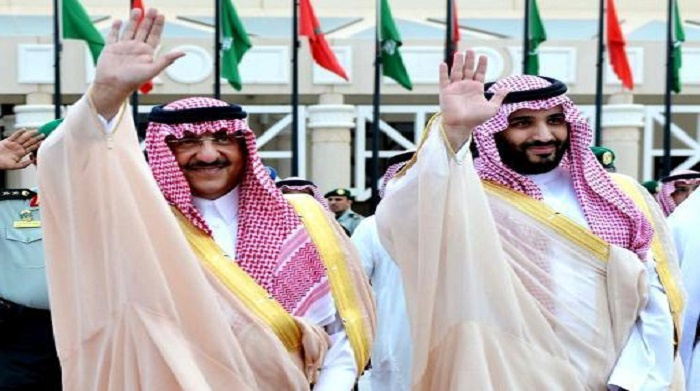Clash of Saudi Titans in the Middle East

The clash of Saudi titans in the Middle East has reached its zenith with the bloody tragedy in Mina. Thousands of Muslim pilgrims were killed in a mysterious catastrophe. Iran immediately accused its Sunni rival of intentional mismanagement. Relations between the two countries deteriorated when the two religious powers began their competition in the aftermath of the Saddam debacle and the power vacuum in Mesopotamia. The Mina tragedy is now feeding this antagonism, especially when Iran’s former ambassador to Lebanon, Ghazanfar Roknabadi, surprisingly disappeared. Al-Arabiyah, the Saudi government-controlled media outlet, claimed no one had entered Mecca with this name. Al-Arabiyah intensified its anti-Iran campaign when it branded Iranian Hajis as the main reason for the occurence of Mina tragedy.
The important point is that the recent event in Mina would have tremendous impacts on the power struggle in the House of Saud especially between Muhammad bin Salman, the deputy crown prince, and Muhammad bin Nayef, the Crown Prince. Since King Abdullah’s death, Saudi Arabia has faced threats, both internal and external, that have shattered the dignity of the House of Saud in its citizens' eyes.
Everything began with the Saudi military campaign against the so-called pro-Iran Houthis in Yemen. While the new Saudi statesmen thought that they could have suppressed the Shia Houthis in less than a week, Saudi Arabia's invasion of Yemen, led mainly by Muhammad bin Salman, has not been able to accomplish the mission yet. Then, the sequential bloody events in Mina disturbed the apparently silent internal atmosphere of the country: the crane collapse and the Mina stampede.
While the first catastrophe, the war in Yemen, could be justified by accentuating Iranophobia, the recent Hajj tragedies shed light on the misunderstanding of the Saudi ruler which in turn demonstrates the possibility of socio-political tension in a highly-controlled society like Saudi Arabia.
So far, King Salman and his son Muhammad have been able to marginalize their competitors, though at the expense of Muhammad bin Salman’s image in the country. Nonetheless, the war in Yemen and the Mina tragedy could change the power equation. From this perspective, Saudi success in the accomplishment of their mission in Yemen and Hajj would rehabilitate the Saudis' image internally and externally. This means that if Saudi Arabia suppresses the Shia Houthis, Muhammad bin Salman’s opposition would not be able to challenge his rising power in the country. That is why despite all expenses, the Saudis have so far dedicated so much money and ammunition in Yemen.
Nevertheless, the war in Yemen is a double-edged sword that could lead to catastrophe for the al-Saud family in Riyadh. The unsuccessful military campaign would destroy Muhammad bin Salman’s power in the country. The young Prince seems to put himself in danger, particularly after heavy war casualties along with the rising anti-war campaign in the region and the world.
The Mina tragedy could also be analyzed as a power struggle among Saudi princes. This means an enigma behind the Mina tragedy could be unraveled through the lens of competition between two Muhammad: Muhammad bin Nayef and Muhammad bin Salman.
In fact, many believe that Muhammad bin Salman was intentionally behind the tragedy to weaken Muhammad bin Nayef’s power in politics. Hajj management has been run by bin Nayef, who has been the Interior Minister of Saudi Arabia, and bin Salman, whose inability in the war would harm his power, attempted to make balance with his foe.
Yemen and now Mina are two regional and internal events that are now linked to the power struggles within the country.

